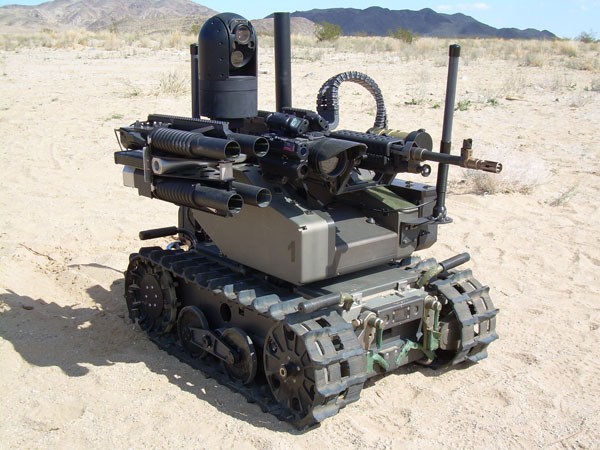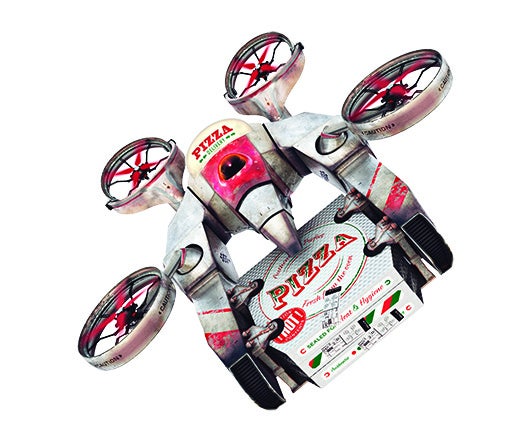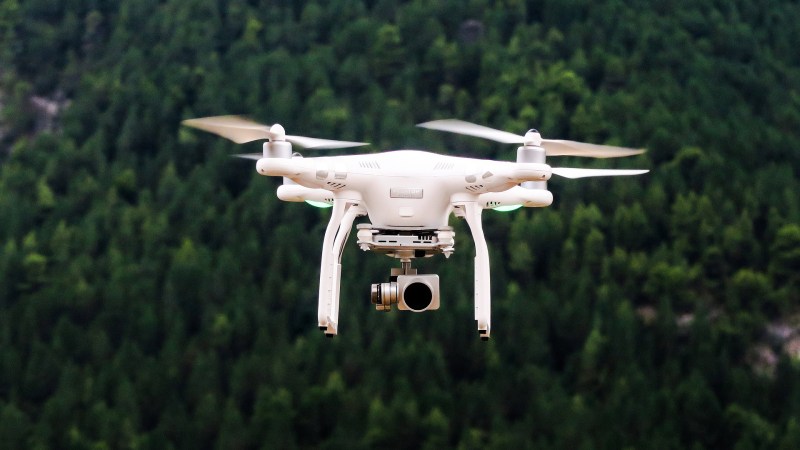

This month, Russia announced that it had completed research on its experimental Marker robot combat vehicle. The machine, designed from the start as a testbed for future tools and technologies, was never designed for combat, but machines based on its features will be. In a Russian military modernizing and mobilizing for war, the Marker program was a bet placed on the future of Russian robotics, one in which the biggest dividends will be realized years from now.
Marker is an uncrewed ground vehicle (UGV), similar in form if not armament to a tank. And like a tank, it has a tracked platform, onto which a range of sensors and weapons can be added. These include a turret with machine guns and anti-tank missiles, as well as a case that can launch drones.
Built by Android Technologies for the Advanced Research Foundation, Russia’s DARPA analog, the Marker has been a showcase vehicle in demonstrations since at least 2019. In that 2019 demonstration, the Marker’s turret followed the movements of an infantry spotter’s rifle scope, suggesting a human could aim the vehicle’s weapon remotely. Even flashier, the Marker moved in formation alongside 15 smaller quadcopter drones.
“We have completed the work on the Marker,” said Yevgeny Dudorov, head of Android technologies, according to recent reporting by state-owned news agency RIA Novosti. “As part of it, we have worked out a number of technologies, but most importantly, the technology of autonomous group interaction of ground-based robotic devices.”
[Related: Meet the ‘Spy Stone,’ a Russian robot disguised as a rock]
The Marker, from the start, has been a tool to test and explore military operations in the safety of controlled field exercises. It’s a way to scope out what might be possible if everything aligns the right way on a future battlefield.
“This is Russia’s most visible R&D project involving ground autonomy, swarm development, [ground robot and drone] teaming, and manned-unmanned teaming. Marker is also a test bed for military AI solutions such as machine vision, image recognition and natural language processing,” says Samuel Bendett, an analyst at the Center for Naval Analysis and adjunct senior fellow at the Center for New American Security.
In its support for wars in Syria and in eastern Ukraine, Russia has already fielded some new robots, but these have been in conventional use cases. Rather than introducing new combat formations, these robots have been a tool added to a bomb squadron, or a scout robot incorporated into normal reconnaissance duties. Marker, by testing systems like sensors or communications that can go on existing robots, may have led to improvements in how those robots work.
The country’s Ministry of Defense has announced plans to test its existing Uran-9 combat robot, its Kungas family of combat and scout robots, and the in-development Soratnik and Shturm robot tanks.
“The Russian Ministry of Defense is pursuing swarm and group development for its aerial, ground and maritime robotics systems,” says Bendett. “Integrating these uncrewed ground vehicles in a common operating environment with crewed weapons and systems is high on the Ministry’s agenda.”
[Related: An inside look at how one person can control a swarm of 130 robots]
By working with Marker, Russia has been able to explore how combat formations designed from the start to incorporate autonomous robots might work, and if those formations can augment existing forces. Better communications, scouting, and control tools, tested on the Marker, could let robots work in formation with crewed human vehicles, and this is a direction Russia has clearly indicated it wants to take its military robot design.
Since 2014, Russia has backed forces inside eastern Ukraine, and this winter, it appears to be mobilizing even more forces for a possible invasion of another part of the country. While Russian robots will likely feature in a modest role in any larger Ukraine/Russia war, the Marker will not be among those vehicles.
“It’s likely that Russia may utilize Uran-6 demining UGVs, as well as Scarab and Sphera small scouting robots tested by Russian sappers in Syria in demining operations,” says Bendett. “While the Russian military tested different combat UGV types during recent exercises such as Zapad-2021, it’s unlikely they could be used in a significant capacity in Ukraine.”
While Marker-influenced ground robots may fight in future wars, it’s the flying Russian robots that are likely to see action in any conflict in 2022.
“At the same time, numerous UAVs may be used by the Russian military in Ukraine, such as multiple short-to-mid range surveillance and reconnaissance models used extensively in Syria,” says Bendett.





















